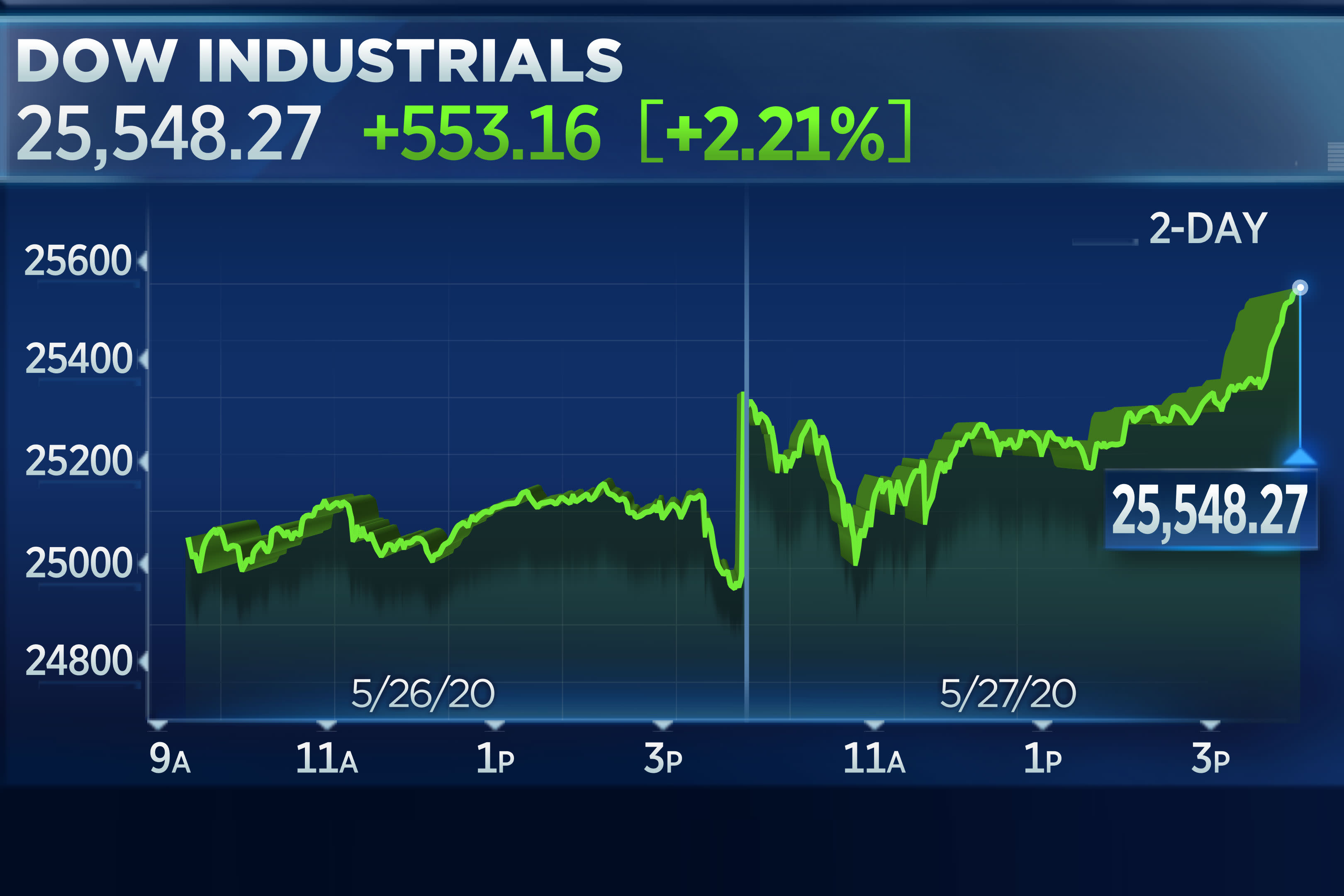Stock Market News
Table Of Content

But unlike private equity investments, which are typically reserved for accredited investors, thousands of stocks are available for anyone to buy and sell on public exchanges like a stock market. Stocks are issued by companies to raise capital to grow the business or undertake new projects. There are important distinctions between whether somebody buys shares directly from the company when it issues them in the primary market or from another shareholder in the secondary market. Thankfully, you don't need a huge account balance to build a diversified stock portfolio with your broker. Through the use of ETFs, mutual funds, or fractional shares, it's easy to invest in dozens or hundreds of stocks with minimal capital. Most often, stocks are bought and sold on stock exchanges, such as the Nasdaq or the New York Stock Exchange (NYSE).
Is This Beaten-Down Dividend Stock a Buy? - Yahoo Finance
Is This Beaten-Down Dividend Stock a Buy?.
Posted: Sat, 27 Apr 2024 15:50:00 GMT [source]
Other U.S. Stocks Data
A stock represents fractional ownership of equity in an organization. It is different from a bond, which operates like a loan made by creditors to the company in return for periodic payments. A company issues stock to raise capital from investors for new projects or to expand its business operations. The type of stock, common or preferred, held by a shareholder determines the rights and benefits of ownership.
Is Take-Two Interactive Stock Going to $185? 1 Wall Street Analyst Thinks So. - Yahoo Finance
Is Take-Two Interactive Stock Going to $185? 1 Wall Street Analyst Thinks So..
Posted: Sat, 27 Apr 2024 16:00:00 GMT [source]
Buy the Dip on IBM Stock
Besides his extensive derivative trading expertise, Adam is an expert in economics and behavioral finance. Adam received his master's in economics from The New School for Social Research and his Ph.D. from the University of Wisconsin-Madison in sociology. He is a CFA charterholder as well as holding FINRA Series 7, 55 & 63 licenses.
How to buy and sell stocks

After a company goes public through an initial public offering (IPO), its stock becomes available for investors to buy and sell on an exchange. Typically, investors will use a brokerage account to purchase stock on the exchange, which will list the purchasing price (the bid) or the selling price (the offer). The price of the stock is influenced by supply and demand factors in the market, among other variables.

Conversely, shareholders can also expect their returns to be diminished if the company underperforms or declines. And in the worst-case scenario, a stock owner's shares could become worthless if the company was to go bankrupt. Companies can issue new shares whenever there is a need to raise additional cash. This process dilutes the ownership and rights of existing shareholders (provided they do not buy any of the new offerings). Corporations can also engage in stock buybacks, which benefit existing shareholders because they cause their shares to appreciate in value. Stocks are bought and sold predominantly on stock exchanges and are the foundation of many individual investors' portfolios.
A shareholder is considered an owner of the issuing company, determined by the number of shares an investor owns relative to the number of outstanding shares. If a company has 1,000 shares of stock outstanding and one person owns 100 shares, that person would own and have a claim to 10% of the company's assets and earnings. Treasury stock — also called treasury shares — is stock that a company has bought back from public investors. When a company does a stock buyback, it puts the repurchased shares back under its own control and reduces the supply of shares available in the market. Corporate property is legally separated from the property of shareholders, which limits the liability of both the corporation and the shareholder. If the corporation goes bankrupt, a judge may order all of its assets sold but a shareholder's assets are not at risk.
While investors may focus heavily on a company's fundamental and long-term prospects, traders tend to rely more on news events and technical analysis to inform their decisions. Investors can buy and sell public stocks by opening an account with a stock broker. There are now a large number of brokers who don't charge commissions for stock trades and allow clients to buy fractional shares of stocks. Conversely, shareholders often receive nothing in the event of bankruptcy, implying that stocks are inherently riskier investments than bonds.
Yet, the reading was still mostly in line, and didn't provide any additional surprises after Thursday's economic data similarly showed prices rising. A rally in the world’s largest technology companies lifted stocks, with Wall Street also breathing a sigh of relief after the latest inflation data came roughly in line with estimates. The other issue in the consulting business was a lengthening of backlog duration. The consulting business has about $30 billion worth of business in its backlog, and that number grew by 7% year over year in the first quarter. However, it's taking a bit longer to translate that backlog into revenue for large digital transformation projects. Overall revenue was up 3% in constant currency, free cash flow jumped significantly to $1.9 billion, and profit margins expanded.
What is treasury stock?
When investors are able to take advantage of compounding returns over many years, their profits can increase exponentially. That's why time in the market, rather than perfect timing, is likely to be most important to your success. Bondholders are creditors to the corporation and are entitled to interest as well as repayment of the principal invested. Creditors are given legal priority over other stakeholders in the event of a bankruptcy and will be made whole first if a company is forced to sell assets. Owning stock gives you the right to vote in shareholder meetings, receive dividends if and when they are distributed, and the right to sell your shares to somebody else. IBM is particularly well-positioned to win AI-related business as the AI hype cycle matures.
Companies have been racing to adopt AI technology, but IBM is now seeing its clients thinking more about return on investment. Running advanced AI models can be expensive, so companies need to ensure that this heavy spending produces the desired boosts to efficiency or productivity. IBM's consulting arm coupled with its AI software platform is a potent combination in a world where AI investments need to be justified. In some cases, companies may sell separate Class A and Class B shares.
He currently researches and teaches economic sociology and the social studies of finance at the Hebrew University in Jerusalem. "Time is the greatest ally of the investor because of the 'magic' of compound interest," Johnson says. Below we break down a few of the major types and explain their differences. Meanwhile, Bank of America's US equity chief Savita Subramanian said on Friday that the US economy is still on solid footing despite slowing GDP and hot inflation. Instead, traders focused mostly on earnings strength from Alphabet and Microsoft.
Because of this, dividend-paying stocks are often very attractive to investors who are in or near retirement. Investors can instantly diversify their stock holdings by investing in stock funds (ETFs or mutual funds), which allows you to spread your money across a variety of stocks. Some funds are actively managed while others track benchmark market indexes, such as the S&P 500.
So blue-chip companies usually also fall into the large-cap category. Let's say that you're an average retail investor who only has access to common stock. You can filter your stock search in a variety of ways such as by size, industry, style, or location.
The first common stock ever issued was by the Dutch East India Company in 1602. The board of directors is responsible for increasing the value of the corporation and often does so by hiring professional managers, or officers, such as the chief executive officer, or CEO. Major stock indexes sidestepped so-so inflation data earlier in the day. Personal consumption expenditures, the Federal Bank's preferred inflation gauge, rose by 2.8% in March, above expectations.
Comments
Post a Comment